


MARK TWAIN (SAMUEL LANGHORNE CLEMENS)
1835 -
Acknowledgements
Twain: produced by the photographic studio of the Abdullah Frères, three Armenian brothers, Vhichen, Hovsep and Kevork, based in Istanbul, 1858-
Including:
Louisa May Alcott,
Mary Elizabeth Dodge,
and Joel Chandler Harris

Vb-
xxxxxSamuel Langhorne Clemens, universally known as Mark Twain, is regarded as one of America’s finest writers. He gained international fame both as an author of adventure and travel books, and as a public speaker. His books of this period, notably Old Times on the Mississippi (1875), The Adventures of Tom Sawyer (1876), and the travelogues The Innocents Abroad (1869), Roughing It (1873) and A Tramp Abroad (1880), were largely autobiographical, based on his boyhood days, his work as a steamboat pilot on the Mississippi, and his travels in the American West, Europe and the Holy Land. His writings and his lectures, combined a lively sense of humour with some serious facts and some biting comment. And his use of the vernacular and his knowledge of the local people captured as never before the American way of life out west. As we shall see, it was in 1885 (Vc) that he published his masterpiece in the United States, The Adventures of Huckleberry Finn, generally considered to be the first great all-
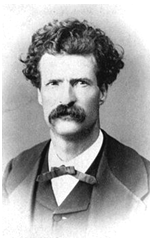 xxxxxMark Twain, one of America’s finest writers, gained international fame within his own lifetime, both as an author of adventure and travel books, and as an accomplished public speaker. As a true man of the people, he used his delightful sense of humour and his abundant caustic wit to satirize the corrupt and money grabbing society which was emerging from the turmoil of a civil war. And as a true writer of the people he brought to life, by his knowledge of ordinary folk and their day-
xxxxxMark Twain, one of America’s finest writers, gained international fame within his own lifetime, both as an author of adventure and travel books, and as an accomplished public speaker. As a true man of the people, he used his delightful sense of humour and his abundant caustic wit to satirize the corrupt and money grabbing society which was emerging from the turmoil of a civil war. And as a true writer of the people he brought to life, by his knowledge of ordinary folk and their day-
xxxxxFor the most part, Twain’s tales of adventure and his series of lectures were based on his varied work experience and his extensive travels. Born in Florida, Missouri, he spent an idyllic boyhood at Hannibal on the Mississippi River. Many happy, carefree hours spent on the river and exploring the surrounding countryside gave him ample material for his two famous stories, The Adventures of Tom Sawyer, published in 1876, and his masterpiece, the more weighty The Adventures of Huckleberry Finn, produced in the United States in 1885. On leaving school in 1847 he worked for a short time as apprentice to a local printer, and then in 1851 began contributing articles, mostly humorous in nature, to the Hannibal Western Union, a paper run by his elder brother Orion. In 1853, when this paper began to fold up, he embarked upon his travels, finding work as a journeyman printer in a number of cities, including St. Louis, New York City and Philadelphia. During this time, however, he continued to write amusing articles for a variety of local newspapers.
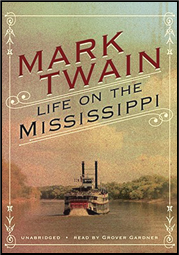
xxxxxThen in 1857 came an unexpected change of occupation. It was during a journey down the Mississippi in that year that he got into conversation with a steamboat pilot named Horace Bixby. He took Twain on as an apprentice, and he worked on the river for the next four years, obtaining his licence in 1859. His experience as a pilot, his love of the river and its people, and his colourful life aboard a steamship -
xxxxxIn 1861 his life as a pilot on the Mississippi came to an abrupt end with the outbreak of the American Civil War and the closure of the river to steamboat traffic. For a few weeks Twain became a volunteer soldier in the Confederate militia, but he had no stomach for fighting and even less for killing. Later that year he and his brother Orion decided to journey out West. They travelled by stagecoach to Carson City in the new territory of Nevada, and it was here that Twain tried his hand at silver and gold mining. Unsuccessful in these pursuits, he began working for the Territorial Enterprise in Virginia City. It was while writing for this newspaper that, early in 1863, he started to sign his amusing sketches and articles with his famous pseudonym Mark Twain -
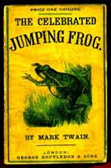
xxxxxIn 1864 Twain moved on to San Francisco, and it was there that he gained his first claim to fame with am amusing story he had heard told in a mining camp. Given the title The Celebrated Jumping Frog of Calaveras, this outlandish tale centred around a certain Jim Smiley -
xxxxxThe following year Twain visited Hawaii, writing about his travels for the Sacramento Union, and then in 1867 embarked on an extensive tour of the Mediterranean and the Holy Land as “travelling correspondent” for the Daily Alta California. On his return he began a long and highly successful career as a public speaker -
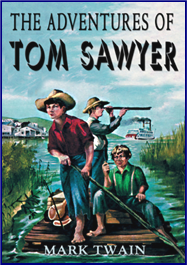 xxxxxIn 1870 Twain married Olivia Langdon, the daughter of a wealthy coal magnate of Elmira, New York, and in September the following year they moved to Hartford, Connecticut (where they lived for twenty years and had three daughters, Susy, Clara and Jean). He now gave up his work as a journalist t
xxxxxIn 1870 Twain married Olivia Langdon, the daughter of a wealthy coal magnate of Elmira, New York, and in September the following year they moved to Hartford, Connecticut (where they lived for twenty years and had three daughters, Susy, Clara and Jean). He now gave up his work as a journalist t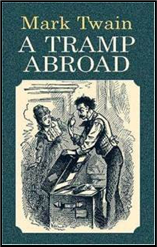 o devote more time to literature, working from home or in his delightful study at Quarry Farm, Elmira. It was during the 1870s that, calling upon past experiences, he wrote Roughing It, Old Times on the Mississippi, and his classic tale Tom Sawyer of 1876, a nostalgic look back at his eventful childhood. And to this period belongs the novel The Gilded Age, a satire on the greed and political corruption of the day, written in collaboration with the Hartford journalist Charles Dudley Warner. In 1878 Twain and his family travelled to Europe for a walking holiday in the Black Forest and this, with embellishment, provided the material for A Tramp Abroad, a light hearted but informative travel book, published in 1880.
o devote more time to literature, working from home or in his delightful study at Quarry Farm, Elmira. It was during the 1870s that, calling upon past experiences, he wrote Roughing It, Old Times on the Mississippi, and his classic tale Tom Sawyer of 1876, a nostalgic look back at his eventful childhood. And to this period belongs the novel The Gilded Age, a satire on the greed and political corruption of the day, written in collaboration with the Hartford journalist Charles Dudley Warner. In 1878 Twain and his family travelled to Europe for a walking holiday in the Black Forest and this, with embellishment, provided the material for A Tramp Abroad, a light hearted but informative travel book, published in 1880.
xxxxxAs we shall see, Twain’s masterpiece, The Adventures of Huckleberry Finn, was published in the United States in 1885 (Vc). Considered as the first great, all-
xxxxxIncidentally, the name Mark Twain was not of his own making. It was used by an old steamboat captain called Isaiah Sellers when writing brief notes about the condition of the river. Twain learnt of this when working as a cub pilot, and he adopted the name when Sellers died in 1863. Nor was it his only pen-
xxxxx…… The word fathom, implied in the term “mark twain”, comes from the Old English word faeom meaning outstretched arms. An international fathom is 6ft. ……
xxxxx…… Twain met Olivia Langden in 1867, and their first date was going to hear a reading by Charles Dickens in New York City. He wrote about 190 love letters to her during their courtship. She proved a devoted wife and companion. ……
xxxxx…… During a visit to England in 1873 Twain met, amongst other notables, Robert Browning, Anthony Trollope and Lewis Carroll. ……
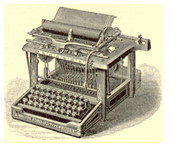 Xxxxx…… In 1874 Twain bought an early model of the Remington typewriter and became one of the first authors to provide his publisher with typescript. The American manufacturer Philo Remington (1816-
Xxxxx…… In 1874 Twain bought an early model of the Remington typewriter and became one of the first authors to provide his publisher with typescript. The American manufacturer Philo Remington (1816-
xxxxxIt was in 1868, the year Mark Twain returned from the Holy Land, that the American writer Louisa May Alcott (1832-
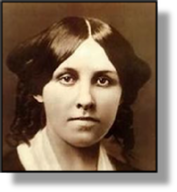 xxxxxIt was in 1868, the year Mark Twain returned from his tour of the Mediterranean and the Holy Land, that the American writer Louisa May Alcott published her charming children’s classic Little Women. Based on her own family life and with Jo, the principal character, close to a self-
xxxxxIt was in 1868, the year Mark Twain returned from his tour of the Mediterranean and the Holy Land, that the American writer Louisa May Alcott published her charming children’s classic Little Women. Based on her own family life and with Jo, the principal character, close to a self-
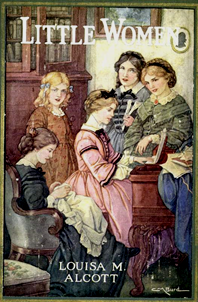
xxxxxAlcott was born in Germantown, Pennsylvania in 1832. She spent most of her childhood in Boston and Concord, Massachusetts and, like her three sisters, was educated at home by her father, an able, progressive teacher. A tomboy by nature, and keen on writing melodramas and short stories as a child (like her creation Jo), she was determined to make a name for herself and help her family out of its money troubles. In 1862 she worked as an army nurse in Washington, tending the wounded from the civil war, and her book Hospital Sketches, based on this experience, was well received when published in 1863. On the advice of her publisher she then put her mind to writing “a book for girls” based in part on her own childhood. The result, five years later, was the publication of Little Women and an end to her family’s financial problems.
xxxxxShe later became an active member of the suffragette movement, but the last years of her life were saddened by ill-
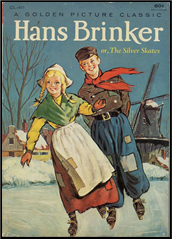
xxxxxTwo other American authors of this period deserve mention, both writing with children in mind. In 1865 Mary Elizabeth Dodge (1831-
xxxxxShe gained her first success with her Irvington Stories in 1864, a collection of tales about an American colonial family, and, after Hans Blinker, wrote a number of books, including Theophilus and Others and When Life is Young. For a number of years she assisted Harriet Beecher Stowe in editing the journal Hearth and Home, founded in 1868, and from 1873 she was editor of the children’s magazine St. Nicholas. This gained such a good reputation that its subscribers included Mark Twain, Louisa May Alcott, Robert Louis Stevenson and Rudyard Kipling.
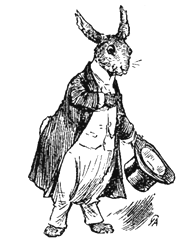
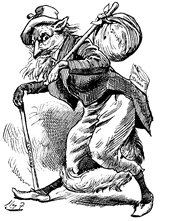 xxxxxThe American writer-
xxxxxThe American writer-
xxxxxSuch characters first appeared in his newspaper, the Atlanta Constitution, in July 1879 under the heading Negro Folklore: The Story of Mr Rabbit and Mr Fox, as Told by Uncle Remus. This proved so popular that the following year he published a collection of such tales entitled Uncle Remus, His Songs and Sayings. A number of sequels followed: Nights with Uncle Remus, Uncle Remus and His Friends, Uncle Remus and Brer Rabbit, and Uncle Remus and the Little Boy, published posthumously. He wrote a number of other children’s books, including The Story of Aaron, Aaron in the Wildwoods, Mingo, and Other Sketches in Black and White.


